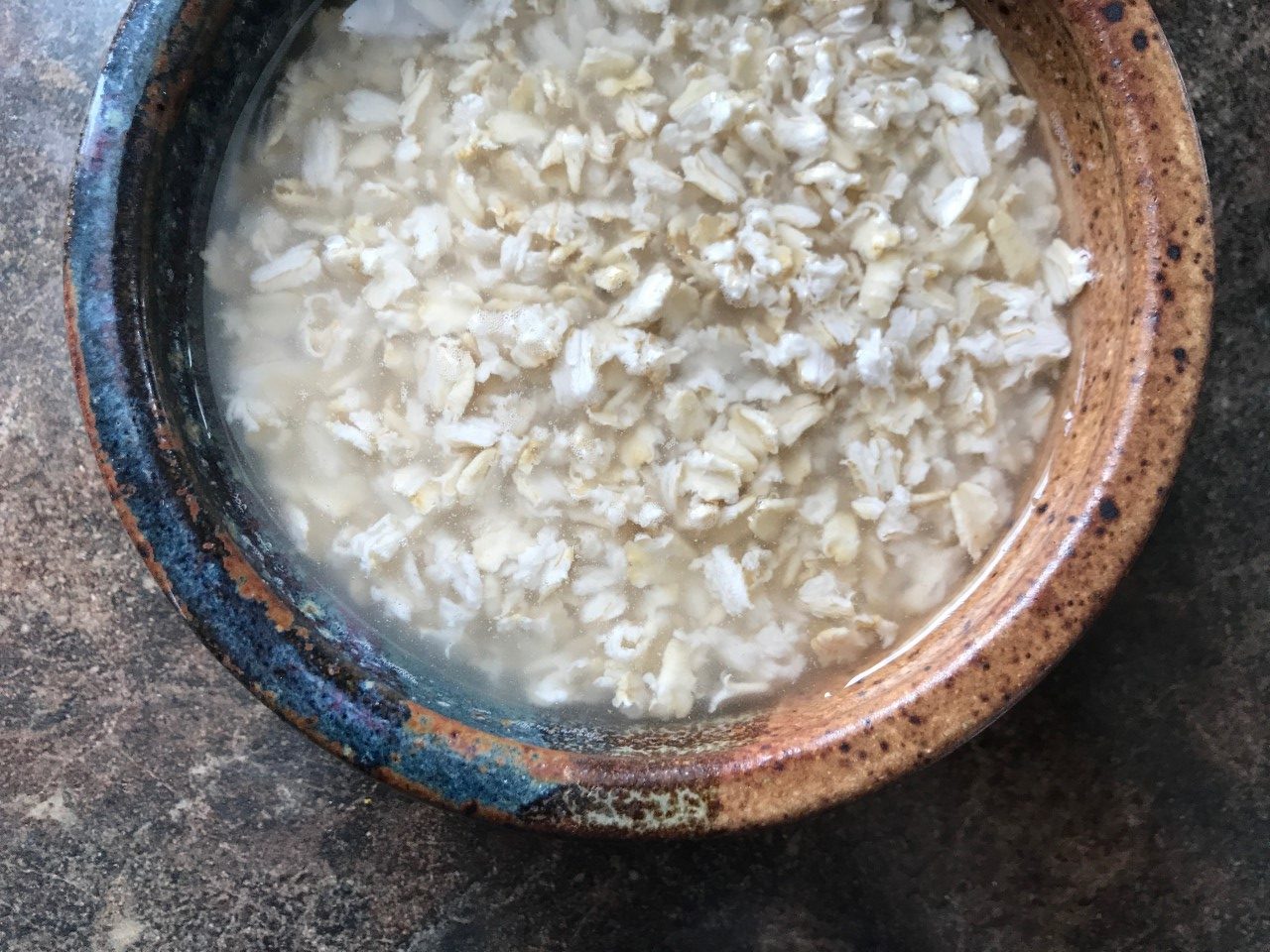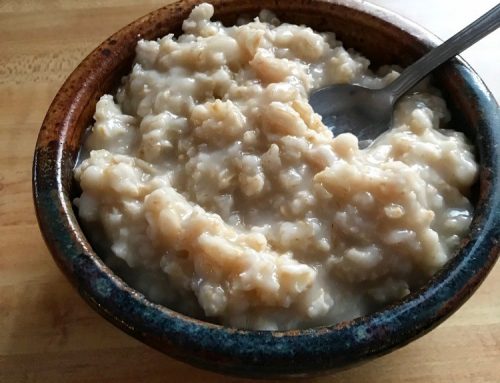Yesterday I had oatmeal for the first time since 2013. It’s been FIVE YEARS since I last ate oatmeal.
Growing up, I didn’t eat oatmeal, ever, but throughout university, I grew to love it and it was a breakfast staple for me for many days… weeks… months… years, but when I began the journey toward healing my gut in 2014, I removed all gluten and grains from my diet and, therefore, stopped eating oatmeal, as well.
Although a gluten and grain free diet has served me well over the past four years, I don’t believe any type of elimination diet should be forever. I think it’s important to experiment, reintroduce, and find a diet that works best for you and allows for the most variety that you can personally tolerate.
With that said, I knew it was time for me to add oats (and some other grains) back into my diet, so I’m in the process of doing just that!
Remember, we change every day and, therefore, our needs change, too, which is why I am an advocate for paying attention to your body, along with it’s desires and needs, and responding accordingly.
Today, I want to talk to you about how to properly prepare your oatmeal for optimal nutrition and digestion.
How to Prepare Oatmeal for Optimal Nutrition and Digestion
For best results, allow for a 24 hour soaking time:
Add raw oats to a bowl and cover with warm filtered water. Then, stir in 1 – 2 teaspoons lemon juice or raw apple cider vinegar.
Cover and allow to sit and soak at room temperature for 24 hours.
After the 24 hour mark or when you are ready to consume, drain the oat mixture, gently rinse, and serve. You can either eat as is, heat it up, or add more liquid, such as a nut milk, and enjoy either warmed up or cool and topped with your favourite toppings!
Why Soak Your Oats?
The reason why I recommend soaking your oats for 24 hours before consuming them is because oats contain a very high amount of phytates. Phytates are a type of anti-nutrient, which can block the absorption of key nutrients such as calcium, zinc, magnesium, iron, and copper. By soaking oats, an enzyme known as phytase is activated, which is necessary for the breakdown of phytate (the anti-nutrient). In addition to the breakdown of phytate, phytase also helps release beneficial nutrients from the oats, which allows our bodies to digest and absorb the nutrients much more efficiently.
Do You Really Have to Soak Your Oats for 24 Hours?
You don’t have to do anything, but if you want to reduce the phytate in your morning bowl of oats and activate the phystase, I highly recommend soaking them for the full 24 hours as oats contain a very small amount of phytase, which is why they require a longer soaking time compared to some other grains.
At first, I couldn’t be bothered by soaking my oats as I thought it was too much prep time. However, what I have found to work well for me is beginning the soak right after I finish my bowl of oats. For an example, if I have soaked oats on Monday for breakfast and know I want them again on Tuesday, I just begin the soaking process right after I’m finished eating my breakfast! With this routine, I don’t forget to soak my oats!
Do the Oats Tastes Sour After Being Soaked in Lemon/Apple Cider Vinegar?
Another reason why I put off soaking my oats for so long was because I assumed the soaking process would make them taste sour, like lemon juice or apple cider vinegar (depending on which you use for the soaking process). However, once you drain and gently rinse your oats after the soaking process, you can’t even taste the lemon/apple cider vinegar at all! I was surprised, but very happy with the results and after five years of not having oats, my body is tolerating them really well, too!
Which Oats Do I Recommend?
As someone who must continue to follow a gluten free diet, I am sure to choose grains that are 100% gluten free. Oats are naturally gluten free, however, many oats are processed in facilities that also process wheat. Therefore, it is important to choose 100% gluten free oats if you’re like me and must continue following a gluten free diet. Two brands I love and recommend are Only Oats and Bob’s Red Mill.
Stay tuned for an oatmeal recipe next week!



